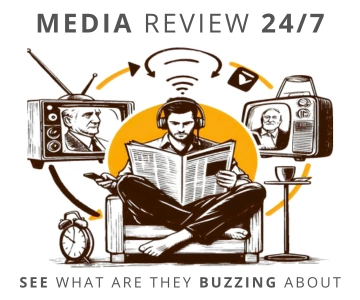 illustration: Bing/Copilot
illustration: Bing/CopilotEvery day in Poland, an average of 5 billion short videos are watched, and users of social media platforms spend an average of 43 minutes a day viewing them. In 2023, 61% of internet users in Poland watched short social videos, marking a 15% increase compared to 2022. The percentage of creators recording such formats stands at 23%, reflecting a 10% year-on-year increase.
The most popular formats of short videos are humorous, educational, and musical. More and more individuals are also using short videos to promote their products and services.
Where to Watch, Where to Publish?
The most popular platforms for watching and creating short videos are YouTube Shorts, TikTok, and Instagram Reels. These videos are typically shot in a vertical format and last up to 60 seconds.
- YouTube Shorts is the most popular platform for watching short videos in Poland, with a 52% market share.
- TikTok ranks second with a 38% market share.
- Instagram Reels is in third place with a 10% market share.
Who Watches the Most?
The audience for short videos mainly consists of young people aged 18-34. They are typically active on social media and eagerly use platforms such as YouTube, TikTok, and Instagram.
- 73% of short video viewers are aged 18-34.
- 62% of short video viewers are women.
- Short video viewers are generally active on social media and use a variety of platforms.
Marketing Perspectives
It is no surprise that this gaining popularity format is increasingly being used by the advertising and marketing industry. Reaching a wide audience, building brand awareness, increasing customer engagement, and generating leads and sales are benefits that cannot be overlooked.
- 80% of marketers plan to use short videos in their marketing campaigns in 2024.
- 72% of marketers believe that short videos are an effective way to reach new audiences.
- 65% of marketers find that short videos are an effective way to increase customer engagement.
The full IAB Poland report titled "Short Social Videos - IAB Poland 052024" can be found at
https://www.iab.org.pl/wp-content/uploads/2024/05/Short_Social_Video_IAB_Polska_052024.pdf
COMMERCIAL BREAK
New articles in section Marketing and PR
Dance in the media mirror. Between culture, business and viral fame
KFi
Over 78,000 media pieces, 1.6 billion potential views, and 197,500 social media mentions-dance in Poland is no longer niche. With a combined media value exceeding PLN 800 million, it now outperforms MMA, handball, and hockey.
PR in Poland. Ranking of the largest public relations agencies 2025
KFi
The smallest teams often generate the most publications, and agencies outside Warsaw are increasingly capturing media attention. This unexpected distribution of power is one of the key findings from the 2025 PR Agency Ranking in Poland, developed by Widoczni and IMM.
Connected TV and borderless advertising. The ID5 report
KFi
Viewers are moving away from cable TV. And they are doing it en masse. Already 86% of Europeans watch content via Connected TV and global ad spend in this segment is set to double by 2028. The industry is undergoing a communication revolution.
See articles on a similar topic:
SEO and AI in Polish e-commerce 2025. Harbingers analysts’ report
Krzysztof Fiedorek
Although 44.56% of e-commerce traffic comes from organic results, over half of online stores are not seeing growth. The biggest surprise? A staggering 9.5 million monthly visits lost due to dead content. On top of that, 38% of companies still don’t appear in AI-generated answers - a new and growing source of visibility.
Email Marketing Done Right. How to Avoid Ending Up in SPAM
BARD
One in three Poles receives between 10 and 20 promotional emails daily, and more than half receive at least 10, according to a study by Redlink. For an email to stand out among the competition and be read by the recipient, three key factors are essential, capturing the most attention from recipients.
Marketing technologies in Poland. The state of MarTech report
KFi
Nearly half of marketers in Poland can`t clearly say whether their marketing technologies deliver a real return. Only 5% believe the results are "well above expectations", while 32% simply say: "hard to tell".
Online advertising 2024/2025 report by IAB Poland
KFi
Online ads now consume 57% of all budgets. Companies spent 1.62 billion PLN on video formats alone. After leaner years, the numbers are rising sharply. Digital advertising grew by 20% in a year. Traditional formats are slowly fading.





























